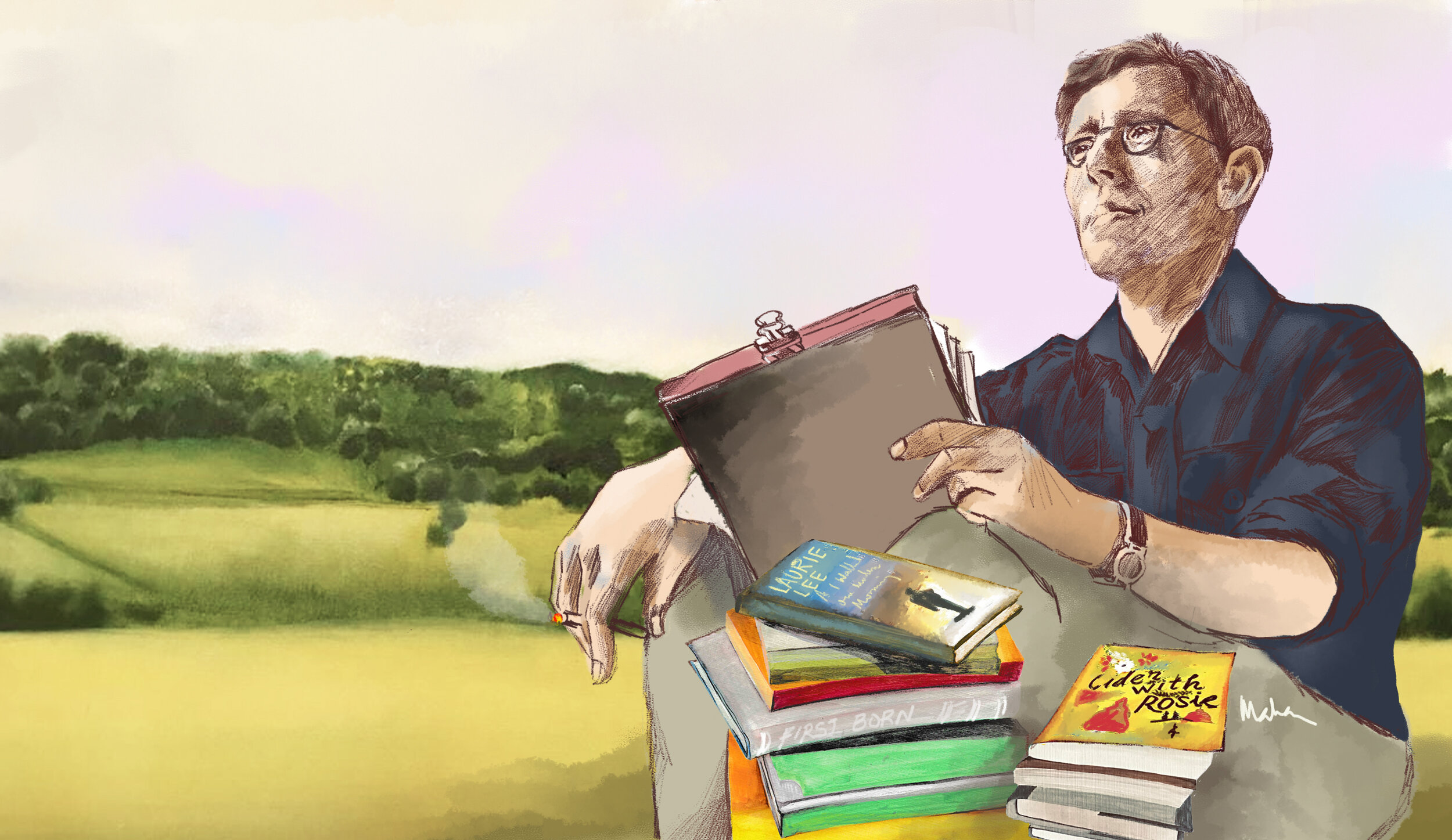by Arunabha Sengupta
It was in Sheepscombe, perched on top of a hill overlooking the wood clad valleys, that Laurie Lee sipped cider and watched the village cricket team in action.
One of the most picturesque cricket grounds of the world, it is oddly shaped, with a curious slope. If the batsman takes strike at the pavilion end, and the bowler runs in from the valley, the long off and long on fielders are blind-sighted. As they field in the depression towards the edge of the boundary, nuzzling with the grazing cows just beyond the field, balls travelling in their direction have to be called out.
It is still called Laurie Lee Fields. The lyrical author purchased it in 1971 for £400. His boyhood home, a cottage in the Gloucestershire village of Slad, near Stroud, still stands above the lake.
Lee was born in Stroud and his family moved to Slad 1917. It is with this move that his immortal Cider with Rosie begins. "That was the day we came to the village, in the summer of the last year of the First World War. To a cottage that stood in a half-acre of garden on a steep bank above a lake… and all for three and sixpence a week.”
It was on the Sheepscombe ground that Laurie Lee lay on the grass with his relatives, sipped cider and watched the village team go about in whites. It is here that the hens scatter in terror when the cricket begins.
Lee, the usual village boy, describes himself as ‘one of the gang’ and joins in such activities as a violent game of cricket at Sixpence Robinson’s. The boys sit on logs and whistle, peel sticks, play mouth organs, make the lives of the pigeons miserable and then retire to the paddock and play cricket under the trees. One of them, Sammy, hops and bows like murder. The stumps are defended with their lives. The cracked bat clots… That is summer.
Lee also writes of his Uncle Sid, a champion cricketer, who learns his cricket on the molehills of Sheepscombe, on the hillocks and cow-dung of home. When he departs for the Boer War, he immediately flourishes on the hard dry pitches of South Africa, breaking records and nerves galore. His murderous bowling reduced heroes to panic. I can see him crouch for the next deliveruy, then spin on his bowed legs, and clout it again half-way to Johannesburg while he heard far-off Sheepscombe cheer.
Lee also reproduces from his memories a scorecard from an old Transvaal newspaper in the book that documents an Army v Transvaal match in Pretoria, 1899. His Uncle Sid comes in at No 6 after four quick wickets and scores 126 not out in 177 for 4 declared. And then takes 7 for 5 as Transvaal is bowled out for 21.
His autobiographical tales do not end with Cider with Rosie. It continues as he grows up in As I Walked Out One Midsummer Morning which details his move to London and visit to Spain in 1935. The story of his life continues in A Moment of War with his return to Spain in December 1937 to join the Republican International Brigades. Not much cricket follows in the two subsequent volumes, but Lee remained a cricket addict.
It was after the purchase of the Laurie Lee Fields, in the 1973-74 winter, that he went down to Australia to meet, as he put it, his brother Jack and kangaroos. Jack Lee, a movie director, lived in Paddington, a place resonant with the name of Victor Trumper. It was during this Australian summer that the brothers went down to the Sydney Cricket Ground to watch Australia play New Zealand in the second Test of the series. Lee and his brother sat in the infamous Hill.
The Hill was in a rowdy mood that day. The Australian batsmen had not done well, having conceded a lead of 150, bowled out for 162 by young Richard Hadlee and his elder brother Dayle.
As they waited for the New Zealand to start their second innings, the spectators engaged in a fight involving beer bottle throwing.
One of the bottles, unfortunately, hit Laurie Lee smack on the head.
“All of a sudden, about a hundred blokes down the front, and about a hundred blokes up the back, opened up into a flaring bottle. We were caught in the crossfire,” he remembered.
There was blood all over him as he collapsed. However, all the pain was not without reward. A group of attractive Adelaide girls attended to him. He lay with “my head cradled in the cupped, scented fingers of this lovely Adelaide dish, and wondering if it was all worth it.”
But when a male police officer tried to administer mouth-to-mouth resuscitation, he sprang up and made for the hospital for his four stitches.
Later Lee said, “I enjoyed [the cricket and all that], but if I go back again I will wear a tin hat.”
Laurie Lee was born on 26 June 1914.
Illustration: Maha

